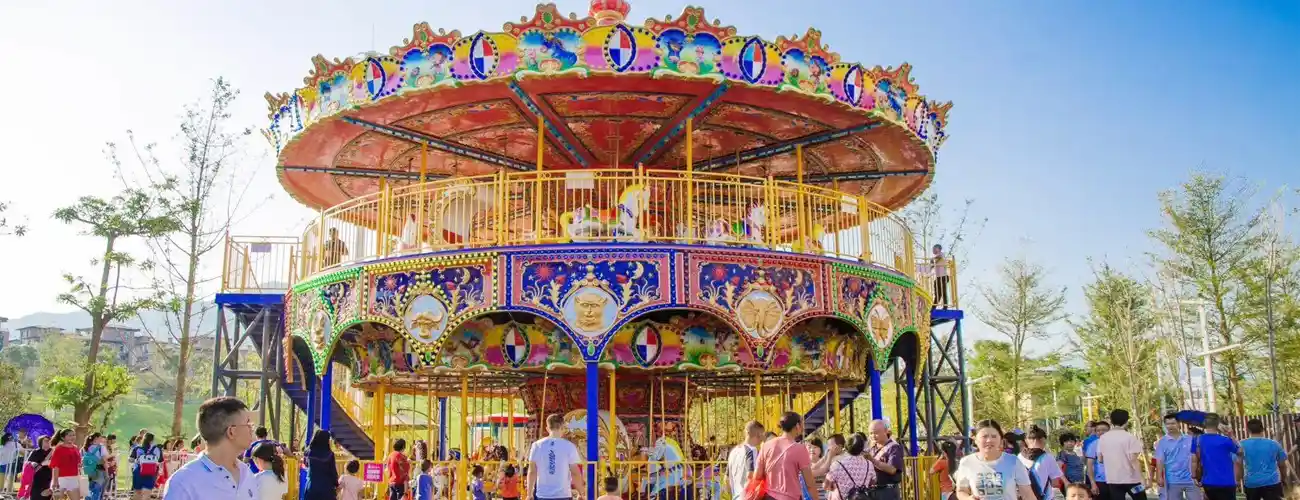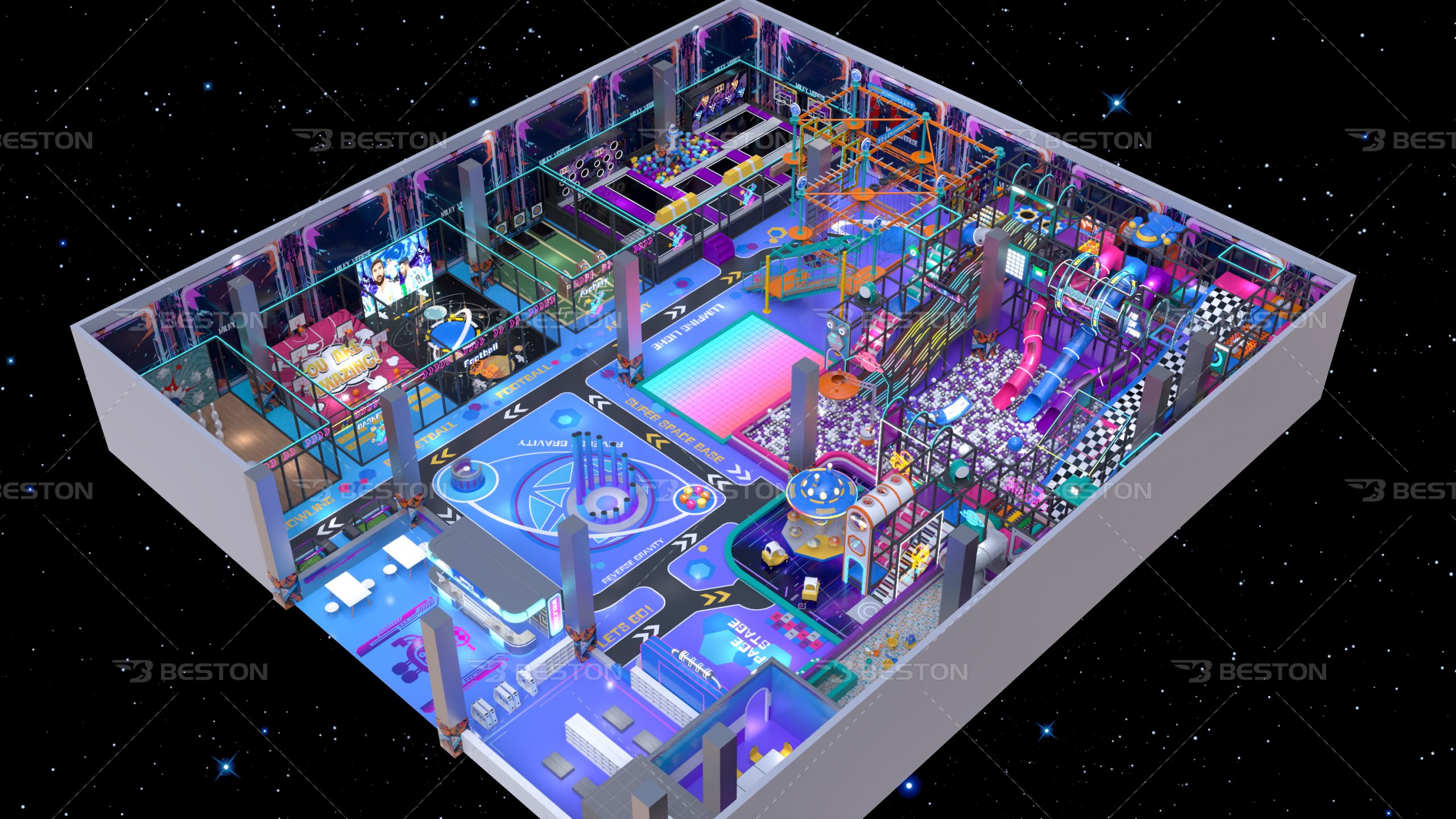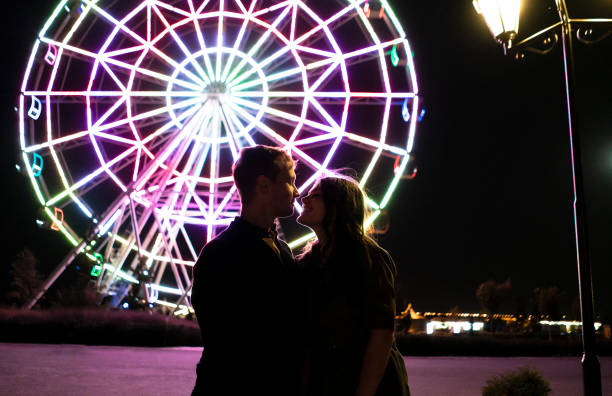A well-executed theme park configuration blends entertainment value with operational efficiency. The layout, selection, and sequencing of amusement equipment directly impact guest circulation, queue management, maintenance load, and ultimately, profitability. A successful configuration strategy involves more than assembling popular rides—it requires a holistic understanding of target demographics, space utilization, ride mix balance, and brand identity.
1. Ride Portfolio Composition and Visitor Flow Optimization
Every park must start with a balanced ride portfolio that caters to diverse visitor segments. Flagship attractions like a double decker carousel serve as central visual anchors, appealing to family groups, young children, and photo-driven visitors. Positioned near the entrance or in high-footfall areas, these two-tiered rides enhance visual impact and double capacity without increasing footprint.
Adjacent to family attractions, operators typically distribute mid-intensity rides—tilt towers, spinning cups, mini trains—that serve as transitional experiences for guests progressing from calm to thrilling. Thematic consistency matters here. Grouping medieval-themed rides or futuristic concepts into clusters creates immersive zones, encouraging guests to linger and engage longer within designated areas.
Guest movement should mimic natural loops rather than dead-ends. Circular paths with alternating attractions and amenities—like shaded rest zones, snack kiosks, and merchandise outlets—improve time-on-site while managing congestion. Wide queuing corridors and mobile ticketing integrations also streamline entry and reduce operational bottlenecks.

2. Selecting the Right Amusement Ride Supplier and Flagship Installations
Choosing an experienced amusement ride supplier is central to operational success. Suppliers not only offer equipment but also guide planning, safety certification, installation logistics, and lifecycle maintenance. Collaborating with vendors who have a strong portfolio in permanent parks, indoor venues, and special environments ensures that the ride mix is both commercially viable and technically compatible with the park’s terrain and climate.
Signature attractions—like a high-capacity roller coaster or a panoramic ferris wheel—serve as long-term investment anchors. While the ferris wheel price can vary significantly depending on size, cabin configuration, lighting systems, and elevation mechanisms, its return on investment remains strong due to its broad audience appeal and constant visibility. These skyline-defining rides support branding and media exposure, and can be monetized through VIP experiences or nighttime light shows.
It is critical to align flagship ride acquisition with the park’s throughput goals, power infrastructure, and thematic positioning. High-maintenance or overengineered rides may erode margins if local demand or technical support capacity is insufficient. Therefore, engaging with a supplier offering scalable and modular design options provides greater adaptability over time.
3. Indoor and Multi-Season Solutions
For year-round operation, especially in regions with adverse weather or limited space, integrating an indoor zone is both practical and profitable. Compact layouts can house family-friendly attractions like soft play zones, climbing walls, mini carousels, and interactive digital experiences. An experienced indoor playground equipment manufacturer can provide tailored solutions that meet safety standards while maximizing vertical space usage.
Indoor areas should not merely function as climate-controlled shelters. Instead, they should offer distinctive entertainment value—such as edutainment zones, immersive projection rooms, or augmented reality games—that complements the outdoor experience. The goal is to create an ecosystem where inclement weather or seasonal dips do not drastically affect visitor numbers.
When configured strategically, indoor sections can serve as anchor points for toddlers and young families, extending visit durations and encouraging multi-generational attendance. Clear zoning, child-parent seating design, stroller storage, and ample sanitation facilities are operational necessities in these segments.

4. Maintenance Logistics and Lifecycle Planning
A theme park’s success is contingent on its uptime. Regular preventive maintenance schedules must be integrated into operational calendars, especially for high-cycle rides. When evaluating options, it’s important to consider not just the ferris wheel price, but also the long-term maintenance support offered by the supplier. A lower upfront cost may lead to higher lifecycle expenses if spare parts are hard to source or service is inconsistent. Working with a supplier that offers long-term parts availability, remote diagnostics, and technician training minimizes unscheduled downtime and costly service interruptions.
Modular ride designs with easy-to-replace components simplify maintenance workflows. Parks with in-house technical teams benefit from a standardized parts ecosystem, allowing quick interchangeability without waiting on international shipments. Moreover, documentation must be multilingual and compliant with national inspection frameworks to ensure seamless annual inspections and renewals.
Maintenance hubs should be distributed to provide rapid access to ride clusters. In large parks, establishing a central control room with live telemetry from critical attractions enhances predictive diagnostics and supports faster response during emergencies.

5. Guest Experience Integration and Revenue Enhancement
Beyond ride selection, the guest experience is shaped by integration of non-ride elements. Interactive queuing systems, character meet-and-greets, ride-specific souvenir kiosks, and digital ride photos boost per-capita spending. Synchronizing these with the ride configuration plan ensures smooth transitions and maximizes monetization opportunities.
Digital infrastructure—like mobile apps offering wait time updates, ride reservation systems, and loyalty programs—further enhances guest satisfaction. When properly configured, these systems redistribute foot traffic, lower perceived wait times, and encourage repeat visitation.
Premium experiences—such as skip-the-line access, VIP gondolas, or interactive light-up wristbands—can be layered onto existing rides, increasing revenue per ride cycle without altering core mechanics.
6. Real-World Operational Learnings
Operators with years of park management experience report that underestimating entry and exit bottlenecks often leads to early congestion. Wide plazas near flagship rides, coupled with directional signage and crowd flow barriers, mitigate these issues.
It is also common to see underperformance in high-capacity rides if not supported by engaging queue design. Interactive walls, in-line snack carts, or AR-based storytelling apps can transform idle wait time into an engaging pre-ride experience.
Seasonal overlays, nighttime programming, and ride retheming campaigns extend ride lifecycle without new capital expenditures. A ride like the double decker carousel, when fitted with programmable LED lighting and audio synchronization, can evolve from a daytime attraction to a nighttime spectacle with minimal investment.
Conclusion
A successful amusement park configuration requires careful balancing of ride variety, operational logistics, supplier reliability, and long-term adaptability. By selecting the right amusement ride supplier, managing cost factors like ferris wheel price, and integrating weather-proof indoor areas through a trusted indoor playground equipment manufacturer, park developers can deliver memorable guest experiences while maintaining sustainable operations. A data-informed, guest-centric approach to ride configuration is no longer optional—it’s the foundation of competitive advantage in the modern leisure industry.